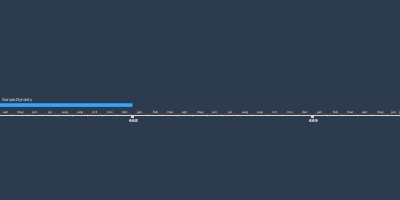Ancient, Proto-Three Kingdoms, and Three Kingdoms (jan 1, 10000 BC – jan 1, 668)
Description:
Although there is evidence of life previously on the peninsula, shown through Dolmens and other megalithic structures, the first real evidence of a political state was Gojoseon, which was recorded in "Memerobelia of the Three Kingdoms" to have been founded in 2333 BCE.After Gojoseon was defeated by the Han Dynasty in 108 BCE, the northern half of the Korean peninsula as well as parts of Manchuria became occupied by minor statelets, such as Goguryeo, Buyeo, Dongye, and Okjeo. While each of the three kingdoms unified at different times, Silla was the first- traditionally recognized n 57 BCE, followed by Goguryeo in 37 BCE and Baekje in 18 BCE. During the Three Kingdoms period the three main entities- along with the smaller Gaya Confederation at the tip of the southern peninsula- were constantly changing alliances not only among themselves, but also with China and Japan. Goguryeo began the process of consolidating power by absorbing the neighboring statelets, and pushed back against Chinese occupation, destroying the last of China's 4 comanderies later in 313 CE. In the south, the Jin eventually dissolved into the surrounding Jinhan, Byeonhan, and Baekje confederacies. Silla was founded within Jinhan through the unification of six separate chiefdoms, and later absorbed Byeonhan which, at that time, had expanded and become the Gaya Confederacy.
Power continually shifted between the kingdoms during the following centuries: in the 3rd Century, Baekje was prosperous due to fertile agricultural lands and their killing of Goguryeo's king Gogugwon in 371 CE, this led to a Goguryeo-Silla alliance that set the foundation for Goguryeo to conquer the Northern half of the peninsula, most of Manchuria, and part of Inner Mongolia in the 5th Century. Around the same time, between 433 CE and 553 CE Baekje and Silla formed an alliance due to concerns over Goguryeo's expansion, but were unable to prevent their eventual control of approx. 90% of ancient Korea. In the 7th Century, Goguryeo began to fight more frequently with China, two notable battles being a fight with the Sui army at Salsu River in 612 CE, and the Tang army and Navy in 644 CE.
In 642 CE Goguryeo formed an alliance with Baekje in an attempt to defeat Silla, but the struggle of fighting both on the northern and southern borders eventually lead to the Kingdom crumbling, and in 668 CE the chinese Tang Dynasty forced king Pojang and many of his subjects to resettle in China. Baekje was facing similar issues as they were unable to ally with Japan, and the combined Tang and Silla forces captured their capital and imprisioned their king Uija. This defeat was the definitive end of the Three Kingdoms period, and much of the peninsula was unified under the control of Silla.
These periods are characterized by the development of iron, agriculture, and trade. Iron had begun to be widely produced as everyday tools, luxury goods, and weapons, alongside the development of Jeulmun pottery. There were great agricultural improvements along the southern and eastern coasts, namely ox-pulled plows, and the development of irrigation systems. Archaeologists have also located Chinese luxury goods such as bronze coins, mirrors, and vessels within the southern peninsula dating to the Proto-Three Kingdoms period, as well as records in the "Annals of the Three Kingdoms" indicating iron trade between Korean States and the Wae and Lolang of Japan.
Added to timeline:
Date:
jan 1, 10000 BC
jan 1, 668
~ 10675 years
